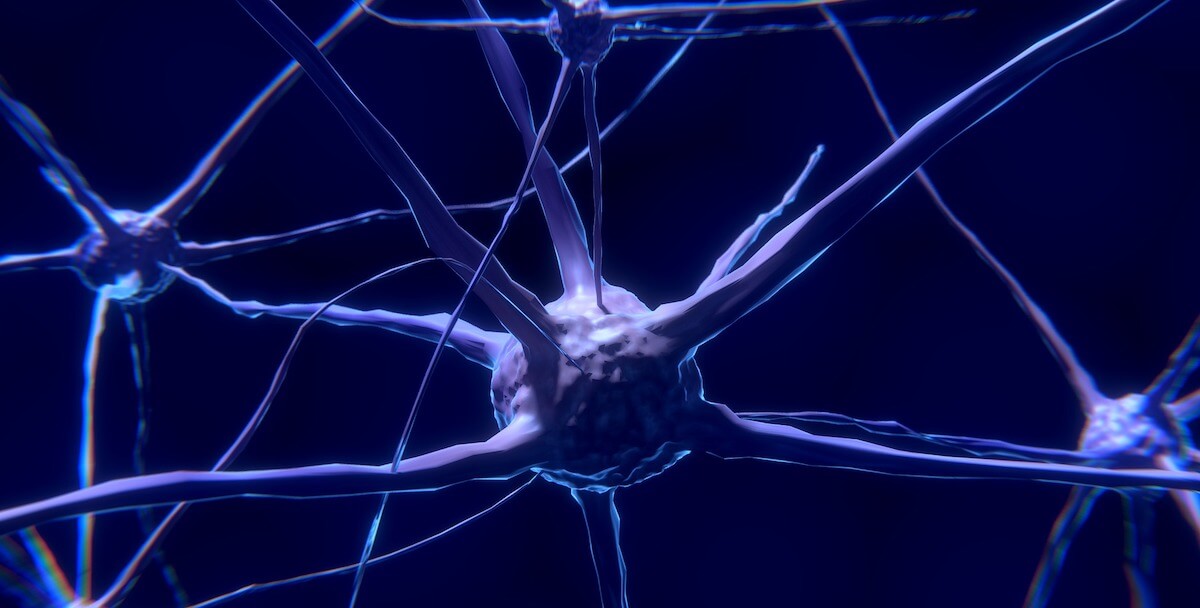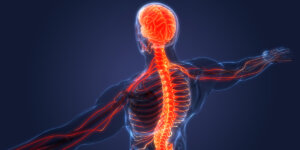
A new USC-led center will develop modular open-source implantable device systems to monitor and stimulate autonomic nerves inside the body. Image/Pixabay.
Our autonomic nervous system is the elaborate network of nerves outside of the brain and spinal cord sensing and controlling the function of every organ in our body. When something breaks down in this vital system, it can be catastrophic, leading to a vast range of diseases and conditions – from obesity and diabetes to heart failure and overactive bladder.
Researchers at USC Viterbi School of Engineering will now be one step closer to developing cutting-edge bioelectronic medicine technology to better understand and treat chronic diseases and conditions modulated by the autonomic nervous system thanks to a new $11.7 million center that, over three years, will develop modular open-source implantable device systems to monitor and stimulate autonomic nerves inside the body.
The Center for Autonomic Nerve Recording and Stimulation Systems (CARSS) will be funded through the National Institutes of Health’s Common Fund. CARSS will be part of the Human Open Research Neural Engineering Technologies (HORNET) initiative within the Stimulating Peripheral Activity to Relieve Conditions (SPARC) program. The center will be co-led by Shelly and Ofer Nemirovsky Chair in Convergent Bioscience, Professor of Biomedical Engineering and Electrical and Computer Engineering, and Vice Dean for Technology Innovation and Entrepreneurship, Ellis Meng, in collaboration with co-principal investigators Victor Pikov from Medipace and Raja Hitti from Med-Ally.

Shelly and Ofer Nemirovsky Chair in Convergent Bioscience and Professor of Biomedical Engineering and Electrical and Computer Engineering Ellis Meng.
Meng said the implantable device system would enable the therapeutic stimulation of autonomic nerves — so doctors can manipulate the communication between a patient’s nerves, organs, and brain to treat a vast range of chronic conditions. The project would also enable sensing so that researchers and doctors can understand more about what is happening within the body during disease progression and in response to the applied neuromodulation therapy. The unique open-source nature of the project would allow the entire research community to access the technology and adapt the implantable system for many therapeutic and clinical research applications.
“The goal of the project is to enable different researchers to access the technology, so they can do whatever study they want clinically and advance different therapies for patients,” Meng said. “We’re putting this technology out there, and researchers will have the ability to program it the way they want — to customize the body interfaces they need. I’m excited by it. But it will also be uncharted territory for this whole field because this is not a concept that really exists.”
The CARSS neurotechnology platform will include an implantable pulse generator (IPG), a pacemaker-like device implanted in the body, for example in the vicinity of the clavicle, to apply electrical pulses directly to the patient’s autonomic nervous system. The CARSS system also includes an external charger and Bluetooth controllers that the physician and the patient can operate, as well as an assortment of interoperable and implantable leads for stimulation and sensing, including tiny cuffs to be attached to autonomic nerves.
The patient and clinician controller will function via smartphone and tablet using the CARSS software. The end result will be an open-source system that can be reconfigured to suit various bioelectronic medicine applications.
“As far as conditions we could treat, we’re leaving that up to the user because there’s an array of different diseases that might be able to be addressed by accessing the peripheral nervous system,” Meng said. “The most popular target would probably be the vagus nerve. It’s a large nerve that connects to everything, and as you go further down into the peripheral nervous system, you start to get to the tiny nerves near different organs that are more difficult to interface with.”
Meng will lead one of the projects within the new center focusing on device design, including the system of tiny electrical cuffs that can attach to and stimulate specific nerves.
“In the system, the nerves are all in little bundles of fibers, and so the standard cuff interface is like your smartwatch — you wrap it around, and your electrodes are like a sensor facing the nerve,” Meng said. “We’re building 20-micron thick — maybe one-quarter of a hair width — spiral cuffs with electrodes to basically wrap around the nerve. It needs to be super small and delicate; otherwise, you’re just going to slice through the nerve.”
A new toolbox of sensors to track vital information about our bodies
Another project within the new center will focus on developing technology for electrochemical, mechanical and temperature sensing within the peripheral nervous system, with the research to be led by Assistant Professor of Biomedical Engineering Maral Mousavi and Assistant Professor of Aerospace and Mechanical Engineering Hangbo Zhao.
Mousavi and Zhao will develop tools to look at two different sensing aspects.

Assistant Professor of Aerospace and Mechanical Engineering Hangbo Zhao.
“One aspect will be sensing of physical parameters such as the temperature and motion of organs.” Zhao said. “The temperature of internal organs is maintained with a narrow range and small temperature variations could perturb organ functions. We will also monitor the motion of certain organs, for example, the expansion and contraction of the bladder. We will be creating implantable sensors that can accurately measure these physical parameters to inform us organs’ functional states.”
Mousavi said the second area the project would examine would be electrochemical sensing, looking specifically at biomarkers and neurotransmitters, for example, measuring dopamine and serotonin levels within the environment of the peripheral nervous system. The project will also measure acetylcholine – a neurotransmitter that has implications for memory and learning and is particularly important in Alzheimer’s research. The team would also create sensors to measure pH – the acidity or basicity of an environment.
“The pH of an environment is a good general indicator of what’s going on. If there’s anything off balance, it will often influence the local pH and cause pH changes,” Mousavi said.
Mousavi said she was excited to be part of the center, which would bring together expertise from industry and research to create unique modular technologies.

Assistant Professor of Biomedical Engineering Maral Mousavi.
“It’s taking a leap beyond just the science where you discover something new. We are going that extra mile, making sure it actually works when delivered to the hands of the consumer,” Mousavi said.
Meng said the new center would break down barriers in research around electrical-based therapies to treat diseases and conditions of organs.
“It’s really going to unlock access and allow people to conduct more experiments,” Meng said. “I think through the scientific discovery that’s going to happen, we’ll hopefully see faster progress towards new therapies.”
The research described in this article is supported in part by award number U41NS129514 from the National Institutes of Health.
Published on October 26th, 2022
Last updated on October 26th, 2022












